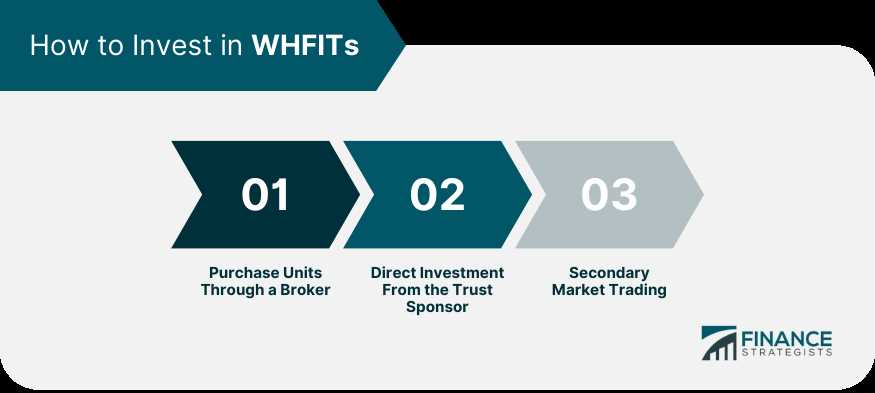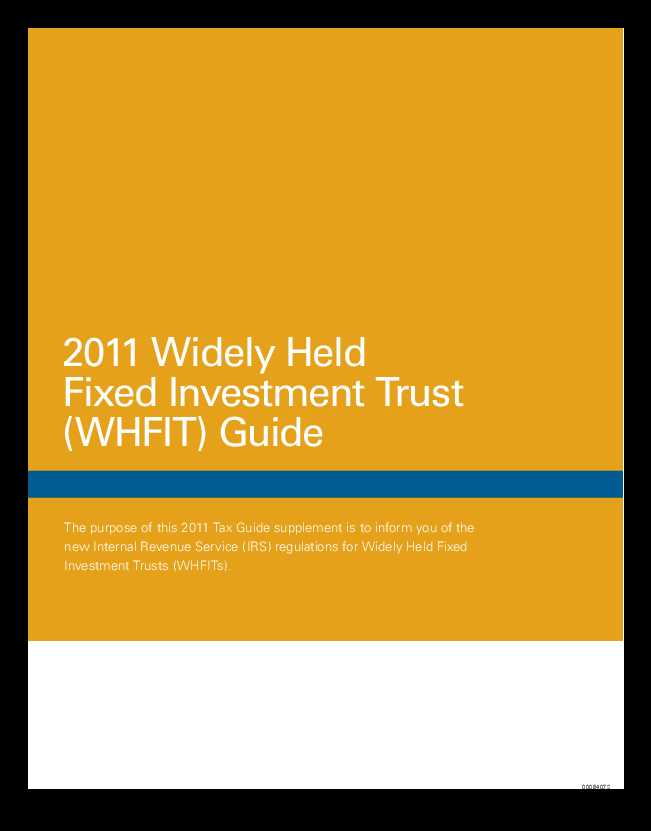What is a Widely Held Fixed Investment Trust (WHFIT)?

A Widely Held Fixed Investment Trust (WHFIT) is a type of investment vehicle that allows investors to pool their money together to invest in a diversified portfolio of fixed-income securities, such as bonds and mortgages. It is a form of collective investment that provides investors with exposure to a wide range of fixed-income assets, without the need for them to individually select and manage these investments.
WHFITs are typically structured as a trust, with a trustee responsible for managing the assets and distributing the income generated to the investors. The trustee may be a financial institution or a specialized investment company. The trust is governed by a trust agreement, which outlines the rights and responsibilities of the trustee and the investors.
Features of a Widely Held Fixed Investment Trust (WHFIT)

There are several key features that distinguish WHFITs from other types of investment vehicles:
- Fixed-income focus: WHFITs primarily invest in fixed-income securities, such as bonds and mortgages. These investments provide a steady stream of income to investors through interest payments.
- Diversification: WHFITs offer investors the benefits of diversification by investing in a wide range of fixed-income assets. This helps to reduce the risk associated with investing in a single security or asset class.
- Passive management: WHFITs are typically passively managed, meaning that the trustee aims to replicate the performance of a specific index or benchmark. This allows investors to gain exposure to a specific segment of the fixed-income market without the need for active management.
- Income distribution: WHFITs distribute the income generated from the underlying investments to the investors on a regular basis. This income can be in the form of interest payments, dividends, or other types of income.
Benefits of Investing in a Widely Held Fixed Investment Trust (WHFIT)
Investing in a WHFIT offers several potential benefits for investors:
- Income generation: WHFITs provide investors with a steady stream of income through interest payments and other types of income generated by the underlying fixed-income securities.
- Diversification: By investing in a wide range of fixed-income assets, WHFITs help to reduce the risk associated with investing in a single security or asset class.
- Professional management: WHFITs are managed by experienced professionals who have expertise in selecting and managing fixed-income securities. This can help to improve the overall performance of the investment.
- Liquidity: WHFITs are typically traded on an exchange, which provides investors with the ability to buy and sell their shares on a daily basis. This allows investors to access their money quickly if needed.
| Asset | Percentage Allocation |
|---|---|
| US Treasury Bonds | 30% |
| Corporate Bonds | 25% |
| Mortgage-backed Securities | 20% |
| Municipal Bonds | 15% |
| Other Fixed-Income Assets | 10% |
How does a Widely Held Fixed Investment Trust (WHFIT) work?

A Widely Held Fixed Investment Trust (WHFIT) is a type of investment vehicle that allows investors to pool their funds together to invest in a diversified portfolio of securities. It is a pass-through investment vehicle, which means that the income generated by the trust is passed through to the investors in the form of interest payments.
When an investor purchases units of a WHFIT, they become a beneficiary of the trust and are entitled to a share of the income generated by the trust. The income generated by the trust is derived from the interest payments received from the underlying securities in the portfolio.
The portfolio of securities held by a WHFIT is typically made up of fixed-income securities, such as bonds and mortgage-backed securities. These securities generate income in the form of interest payments, which are then passed through to the investors in the trust.
One of the key advantages of investing in a WHFIT is the ability to diversify risk. By pooling funds together, investors are able to gain exposure to a wide range of securities, which helps to spread risk and potentially reduce the impact of any individual security’s performance on the overall portfolio.
Another advantage of investing in a WHFIT is the potential for tax advantages. Because WHFITs are structured as pass-through entities, they are not subject to corporate income tax. Instead, the income generated by the trust is passed through to the investors, who are then responsible for reporting and paying taxes on their share of the income.
Investing in a WHFIT can be done through a brokerage account or through a financial advisor. Investors can typically purchase units of a WHFIT in the same way they would purchase shares of a mutual fund or exchange-traded fund (ETF).
A Widely Held Fixed Investment Trust (WHFIT) is an investment vehicle that allows investors to pool their funds together to invest in a diversified portfolio of fixed-income securities. By investing in a WHFIT, investors can gain exposure to a wide range of securities and potentially benefit from tax advantages. It is important for investors to carefully consider their investment goals and risk tolerance before investing in a WHFIT.

Emily Bibb simplifies finance through bestselling books and articles, bridging complex concepts for everyday understanding. Engaging audiences via social media, she shares insights for financial success. Active in seminars and philanthropy, Bibb aims to create a more financially informed society, driven by her passion for empowering others.
